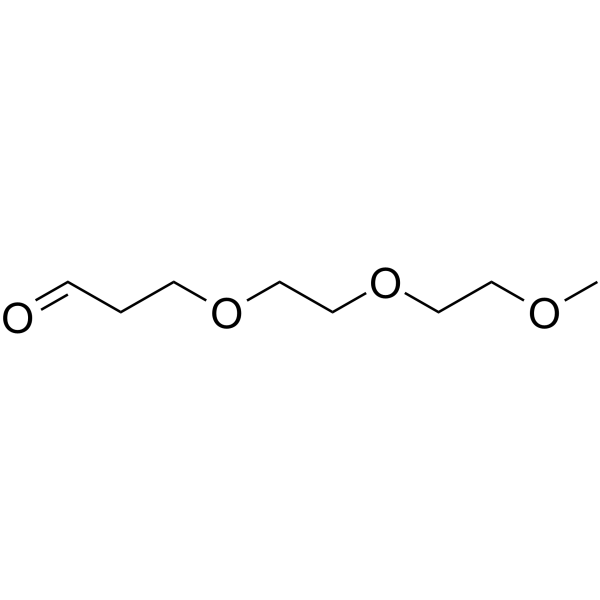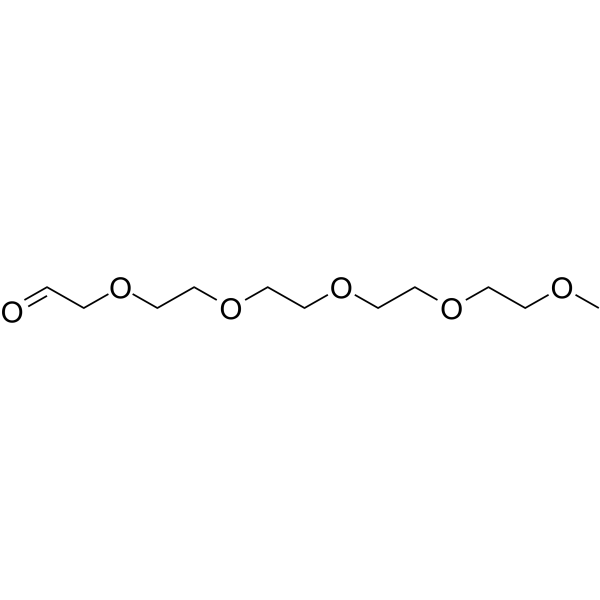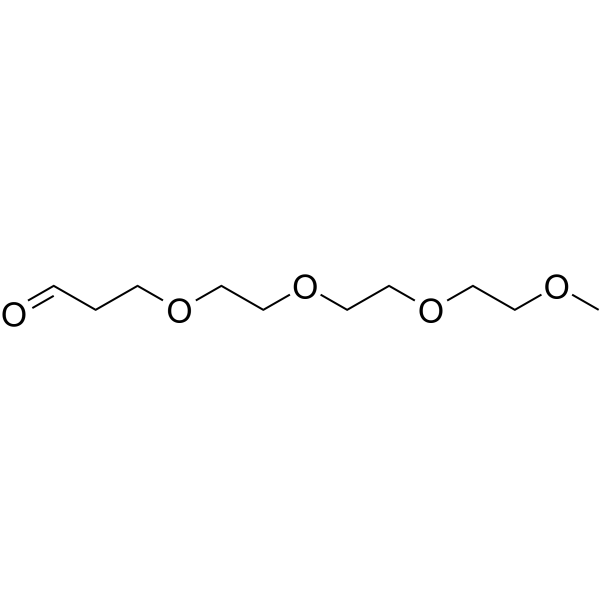上海金畔生物科技有限公司为生命科学和医药研发人员提供生物活性分子抑制剂、激动剂、特异性抑制剂、化合物库、重组蛋白,专注于信号通路和疾病研究领域。
m-PEG3-aldehyde
m-PEG3-aldehyde 是一种 PROTAC linker (PROTAC linker),属于 PEG 类,可用于合成 PROTACs。
m-PEG3-aldehyde Chemical Structure
CAS No. : 356066-46-1
| 规格 |
|
是否有货 |
|
| 100 mg |
|
询价 |
|
| 250 mg |
|
询价 |
|
| 500 mg |
|
询价 |
|
* Please select Quantity before adding items.
| 生物活性 |
m-PEG3-aldehyde is a PEG-based PROTAC linker can be used in the synthesis of PROTACs.
|
| IC50 & Target |
|
体外研究
(In Vitro) |
PROTACs contain two different ligands connected by a linker; one is a ligand for an E3 ubiquitin ligase and the other is for the target protein. PROTACs exploit the intracellular ubiquitin-proteasome system to selectively degrade target proteins[1]. The binding affinities of anti-mPEGs depend more on the backbone lengths of the polymers and the hydrophobicities of their end-groups than on their resemblance to the methoxy terminus of the immunogenic polymer[1]. Aldehyde is reactive to hydrazide and aminooxy groups which are commonly used in biomolecular probes for labeling and crosslinking carbonyls (oxidized carbohydrates). The hydrophilic PEG spacer increases solubility in aqueous media.
Shanghai Jinpan Biotech Co Ltd has not independently confirmed the accuracy of these methods. They are for reference only.
|
| 分子量 |
|
| Formula |
|
| CAS 号 |
|
| 运输条件 |
Room temperature in continental US; may vary elsewhere.
|
| 储存方式 |
Please store the product under the recommended conditions in the Certificate of Analysis.
|
| 参考文献 |
|
所有产品仅用作科学研究或药证申报,我们不为任何个人用途提供产品和服务



